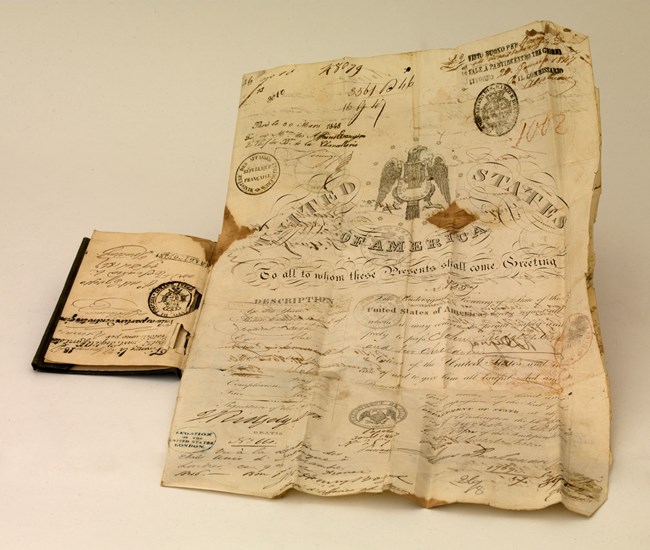
NPS The wealth of the Ridgely family allowed for many extensive world travels. The most well-known traveler in the Ridgely family was Eliza Eichelberger Ridgely, widely regarded as an international traveler, friend of the Marquis de Lafayette and speaker of multiple languages. She and her husband took several extended tours of Europe in the mid nineteenth century (1833-34, 1846-48, 1852, 1859). Their 1846 trip lasted over two years and included extended tours of Paris, Belgium, Italy, Malta, Greece, Turkey, Austria, Bohemia, and Germany. John and Eliza, sometimes accompanied by their children, traveled as American aristocrats “in search of cultural and aesthetic inspiration, as well as the latest fashions and newest domestic furnishings styles popular in the international centers of London and Paris for aesthetic and intellectual stimulation and reflection.” 
NPS During their travels, Eliza Ridgely accumulated fine furnishings and works of art to adorn Hampton and made it an elite and aristocratic home. For instance, one travel account states that, during their “souvenir collecting,” they returned home with “French porcelains, mantel clocks and furnishing silks, English silverware and carpets, Venetian glass, Turkish mirrors, Bavarian tumblers, and numerous views of European cities and works of art.” It was on their travels that they also acquired the Cedar of Lebanon on the south lawn, reported to have made its way from the Middle East in a shoebox. 
NPS Several of Eliza’s children and grandchildren kept up this tradition of European travel, including both of her children (Charles Ridgely and Eliza “Didy” Ridgely White Buckler) and their spouses, and grandson Henry White, a prominent member of the diplomatic corps who became American Ambassador to France and Italy and helped negotiate the Treaty of Versailles following the First World War. |
Last updated: June 17, 2020
